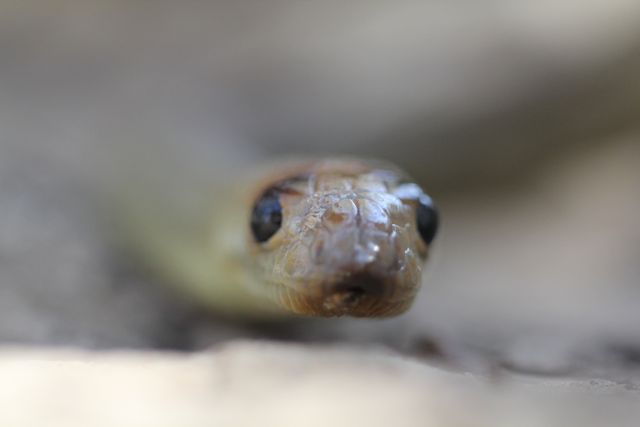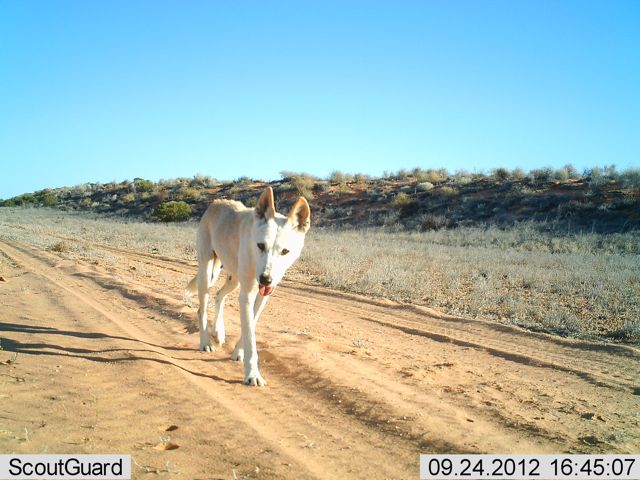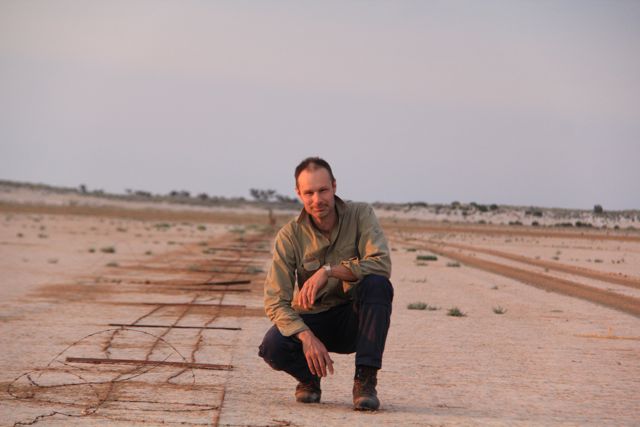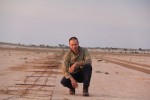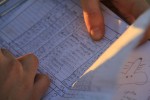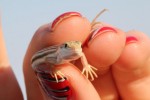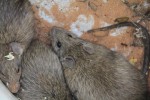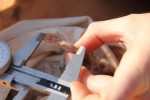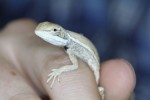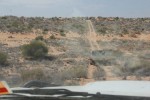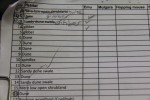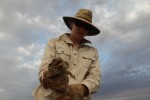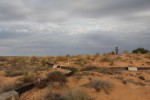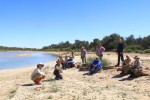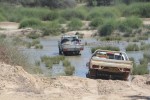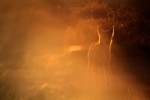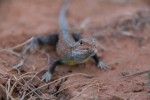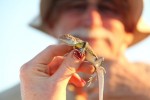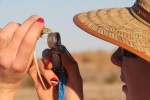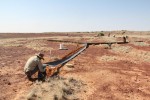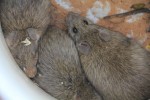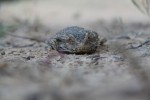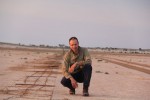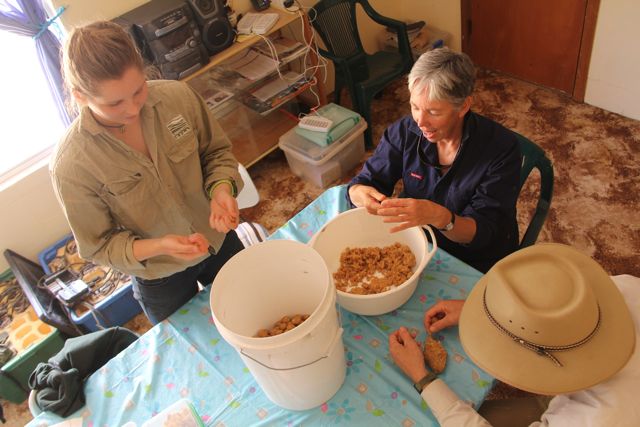The first outcome of the project was Pitfall (An Opportunistic Cultural Survey) – premiered as a solo exhibition at Mildura Arts Centre, Victoria.
A pitfall is an unapparent source of trouble or danger; a hidden hazard: Today we all face, or will soon be facing ecological pitfalls of many kinds.
‘Pitfall’ is a continually-evolving artwork built from multiple screens, a tabletop landscape mapped with projections, fibre optics, 3D spatial sound and infrared night imagery. It builds upon ideas, recordings and cross-disciplinary processes developed during my 2012-13 ANAT Synapse Art-Science residency, with the Australian Wildlife Conservancy (AWC), Australia’s largest private-sector conservation organisation. See the Reintroduction project pages.
SHOWINGS:
1: Pitfall, Mildura Art Centre, 199 Cureton Ave, Mildura, Victoria, Australia, 5th Sept-27th Oct, 2013. Opening 5th September at 7pm. {Coinciding with Mildura Palimpsest Site Specific Arts Biennial, Victoria}. Catalogue. Front Page Headline!
RATIONALE: During that process I was invited to join and work with a team of field ecologists on a broad scale ecological survey of Kalamurina Sanctuary – a vast AWC property located in the Simpson/Tirari Deserts of central Australia. During that month we conducted ‘pitfall surveying’ – a technique utilising a network of guiding fences and pitfall tubes sunk into the ground, designed for catching both day and night mammals, reptiles and invertebrates.
As we worked together, we also undertook further ‘opportunistic surveys’ of nearby birds, plants, animals and related phenomena. So why not then also undertake ‘opportunistic cultural surveys’? Why not ask the ecologists to also record ‘data’ about the cultural changes they perceived would be necessary to avert/avoid the ecological pitfalls looming ahead? The results of these ‘opportunistic cultural surveys’ were returned in paper, image and sample to me, and the ‘numbers’ were then ‘run’ through custom artistic processes.
This led to the envisaging of a computational model that now drives the entire art work – driven by moving ‘creatures’ – each of whom embody qualities of a particular ecologist’s responses around ‘pitfall avoidance’. These ‘creatures’ are suggested by animated imagery, infrared light and 3D sound, that ‘circulates’, and sometimes ‘collides’ with a representation of a pitfall trap line.
Which of these ‘mammals’ in line for a fall will have the timely mix of ‘boldness’, ‘focus’ and ‘size’ to avoid the pitfalls ahead?
FURTHER BACKGROUND: The AWC have instigated radical approaches to conservation in order to stem the rapid decline of Australian small mammals across our landscapes, with species-focused recovery programs and the use of large-scale feral proof fencing techniques. An extensive use of scientific trapping, tagging, measuring and counting processes allows the AWC to demonstrate net gains. One frequently used technique involves the use of pitfall tube traps to catch small mammals and other invertebrates.
During a ‘ground truthing’ residency in Kalamurina sanctuary (North of Lake Eyre in SA) I began to reflect upon the cultural and ecological ideas of a ‘pitfall’ – as an unapparent source of trouble or danger; a hidden hazard. Indeed our very presence out there searching for rare and endangered species suggested we had both fallen into some form of trap, and yet believed/conceived some viable ways out. I was profoundly torn between concern, hope and fear for truly exquisite species in crisis, the astonishing almost gone .. and I, we, had barely even heard of them.
This love, loss and lack inspired me to devise and conduct a playful opportunistic ‘survey’ of my own for the tightly-knit scientific team, working together for a short time at that location. As the surveys were undertaken and returned to me I then ‘ran the numbers’ through my own custom artistic processes – in order to conceive ‘Pitfall’ – an artwork which references the rich diversity of ideas contributed by this highly focused group of scientists on some very big, and very little, picture topics. Pitfall is both heartfelt and wide ranging – and yet it presents a very simple, potent message straight from the conservation ‘coal face’ for species past, present and future (including our own).
TEAM: Keith Armstrong (Artistic director), Luke Lickfold (Composition and Control Systems) and Rob Henderson (Design). Special thanks to Matt Hayward, Shauna Chadlowe, Atticus Fleming, Joe Stephens and the numerous AWC staffers who have generously contributed. Special thanks at Kalamurina go to Joss, Trish, Flic, Leah, Keith B, Rachel, Amy, Tony, Mark and Tess.
KEY PARTNERS:
Australian Network For Art and Technology Synapse Art Science Residency Program , Australian Wildlife Conservancy, QUT Creative Industries, QUT Interaction and Visual Design, MAAP Media Bank, Embodiedmedia and others tbc.









